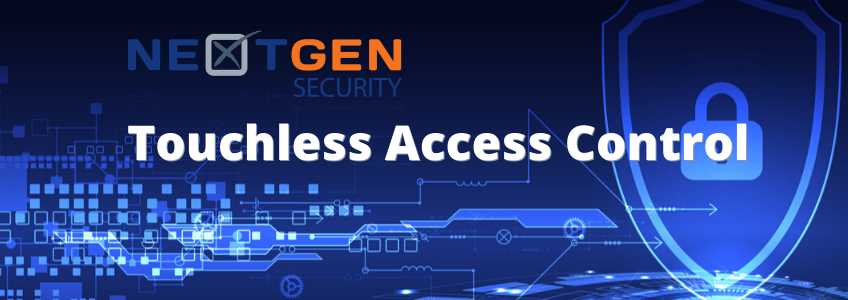With Social Distancing taking on such significance in our new COVID-19 world, the ability to deliver touchless access control has never been more vital. The Corona virus spreads like wildfire with human to human contact, so it only makes sense to implement as many contactless measures as possible.
Traditional access control methods such as keypads, prox cards and key fobs have been proven and trusted ones over the years. Ditto for the more advanced biometric fingerprint modes of access. But COVID-19 counter-measures now dictate a clear need for different access control capabilities. Capabilities that are contactless.
Countless facilities are now faced with the challenges of limiting person-to-person contact. Shared spaces such as residential, commercial and industrial buildings, small businesses, government agencies offices, hospitals and factories that are typically accessed on a daily basis by many different people are now dictated to adhere to the public safety guidelines of social distancing. But, at the same time, they’re still tasked with maintaining the same high level of access control security as ever.
Thankfully, technology was better prepared to take on this vicious virus than any human being possibly could have imagined just a few short months ago.
Solutions that combine personal identification and digital technologies to interconnect people and processes are now capable of making physical and touch-based interactions touchless. These alternative solutions can provide facilities with the means they sorely need to make access hygienic while still maintaining security procedures.
There are several technology options out there for touchless access control – and we at NextGen are here to help you implement them.
With everything else going virtual – from online learning for students to socially-distanced corporate meetings, why not virtual keys?
Technology now allows users to send a virtual key via a mobile phone that is valid only
for defined, and often limited days and times and facility areas that are designated and authorized. Some virtual key solutions now on the market enable all access permissions to be programmed, monitored and modified to accommodate the needs of various personnel, including sporadic workers like cleaning crews, delivery people and construction workers. Virtual key access allows access management personnel to remain in complete control, which is so vitally important during these most challenging times when security is sorely needed and reduced person-to-person contact is imperative.
So how exactly do virtual, ultrasonic keys work to deliver a safe entry experience to your facility? Some are coded “silent” audio messages that are sent from a mobile phone app to any electronic entrance keypad. When an authorized person holding a mobile phone approaches the corresponding electronic entrance that requires the manual handling of a magnetic card, biometric fingerprint or push button keypad, the mobile device plays an audio code that essentially acts as the virtual key. As some leading manufacturers of this technology attest, unlike a password or pass coded number, a physical key or keycard, an ultrasonic key is always virtual and can never be copied, lost or stolen. It will be deleted and replaced.
Other solutions such as touchless access control readers provide much needed peace of mind to business owners struggling with the uncertainties of running their businesses during these unprecedented and challenging times. New technology offerings can deliver embedded face and palm recognition sensor that provide 100% touchless user authentication for many applications spanning Access Control, Time & Attendance, Visitor Management, Event Management & more. Some can even detect if someone requesting access has a fever and/or is wearing a protective mask and will automatically deny access if a high body temperature or no mask is detected.
These types of touchless access control solutions not only help prevent the spread of COVID-19 in facilities of all types but also help them adhere to the requirements so sorely needed to safely open.

